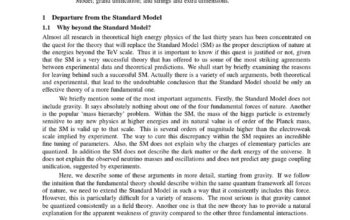The discovery of a second isotope of element 114, known as flerovium (Fl), by researchers in Dubna represents a landmark achievement in the field of nuclear physics and chemistry. This development not only enhances the periodic table but also challenges existing theoretical frameworks regarding the behavior of superheavy elements. The investigation into flerovium’s isotopes is pivotal, as it heralds the potential for profound shifts in our understanding of atomic structure, chemical properties, and the nature of nuclear forces.
Element 114 was first synthesized in 1999 by a fusion of calcium-48 nuclei with curium-248 at the Joint Institute for Nuclear Research (JINR) in Dubna. Since its inception, element 114 has garnered attention for its unique characteristics and transient nature. The recent discovery of a second isotope expands the frontier of superheavy elements and encourages further exploration into their stability and applicability.
Isotopes, by definition, are variants of a chemical element that share the same number of protons but differ in the number of neutrons. This fundamental distinction imparts unique physical and chemical properties to each isotope. The newly discovered isotope of flerovium is particularly noteworthy; it resides beyond the island of stability, predicted by some theoretical models to exist in superheavy regions of the periodic table. The implications of this discovery are manifold, ranging from insights into nuclear stability to innovative applications in advanced materials science.
The synthesis of the second isotope involved advanced techniques that require a sophisticated fusion-evaporation method. Researchers bombard a target of curium-248 with accelerated calcium-48 ions, inducing a nuclear reaction that yields flerovium isotopes. The transient nature of these isotopes complicates detection, as they exhibit rapid decay, typically measured in milliseconds. Understanding the decay modes and half-lives involved in this new isotope offers valuable information on its nuclear structure and interactions.
One of the most intriguing aspects of superheavy elements is their predicted chemical properties, which can diverge significantly from lighter homologs. For instance, the relativistic effects become significant, influencing properties such as oxidation states and chemical bonding. Flerovium, as a heavier homolog of lead, is expected to exhibit unique characteristics that differentiate it from its lighter counterparts. The recent discovery provides an opportunity to reevaluate these predictions through experimental validation, provoking inquiry into whether flerovium behaves more like a post-transition metal or a group 14 metalloid.
The underlying motivations for synthesizing new isotopes of heavy elements are rooted in the quest for understanding the very fabric of matter. Researchers are not only attempting to create and characterize heavier isotopes but also to decipher the intricacies of the nucleonic forces at play. These investigations enhance theoretical models, guiding the understanding of atomic structure at extreme atomic mass.
Moreover, the implications of flerovium’s behavior in terms of technological applications are compelling. There is increasing interest in how superheavy elements can contribute to materials science or even advancements in nuclear science. Potential applications could arise in weaving more efficient materials or novel types of electronics that leverage unique electronic properties arising from relativistic effects.
Furthermore, this discovery may provide insights into the synthesis of even heavier elements, pursuing the so-called “island of stability.” Theoretical predictions suggest that certain heavy isotopes possess longer half-lives than theorized, creating a potential realm where more stable superheavy elements could reside. The understanding gained from studying flerovium and its isotopes can offer essential clues in the ongoing quest for heavier nuclei, subsequently advancing the field of nuclear chemistry and physics.
Interactions between nuclear particles and the stability of superheavy elements pose profound questions that engage theoretical physicists and experimental chemists alike. As researchers delve deeper into this endeavor, they not only stand to uncover new isotopes but will also tightly knit the understanding of elemental interactions. The implications of these discoveries go beyond academia and might ripple through various applications—broadening the horizons of interdisciplinary research.
The curiosity surrounding the properties and behaviors of elements beyond uranium captures the attention of scientists globally. A discovery such as the second isotope of flerovium serves to reinvigorate interest in nuclear chemistry and physics, challenging both the scientific community and the public to explore the complexities of matter at its most fundamental level. Each new isotope uncovered prompts further research into the potential for undiscovered elements, engaging a sense of wonder about what lies beyond the known.
In conclusion, the discovery of a second isotope of element 114 marks a significant milestone in nuclear science, promising a paradigm shift in the understanding of superheavy elements. As researchers continue to explore the boundaries of the periodic table, they expand not only the roster of known isotopes but also the potential for novel applications that hold promise for future technological advancements. This journey into the unknown continues to stoke the flames of curiosity within the scientific community and offers a tantalizing glimpse into the future of chemistry and physics.












